
A modest idea to create a “contemporary portrait of the outback” turned into a 150,000-kilometre road trip and a decade-long obsession for photographer Adam Ferguson.
Ten years ago Adam Ferguson rented a four-wheel drive, packed some camping gear, a camera and two fixed lenses, and started driving. He’d spent almost two decades working as a photojournalist abroad, often in war zones and disputed territories, in Afghanistan, Iraq and India. He started to think about home.
“I guess I did what every storyteller does when they hit a moment of crisis in their career,” he says. “I felt like I needed to come home to tell a story.”
He set out to make a “contemporary portrait of the outback”, but with only vague ideas about where to start. He’d spent the first year of his life in a little country town named Yeoval near Dubbo, where his mother’s grandparents had farmed.
“The bush is central to Australian identity but it’s a vast place that’s also misunderstood and often forgotten. The outback has been romanticised in our culture” – the bush poet Banjo Paterson grew up in Yeoval – “but it’s also sometimes portrayed as a ghastly place. I wanted to make a new narrative about the landscape and how humans engage with it.”
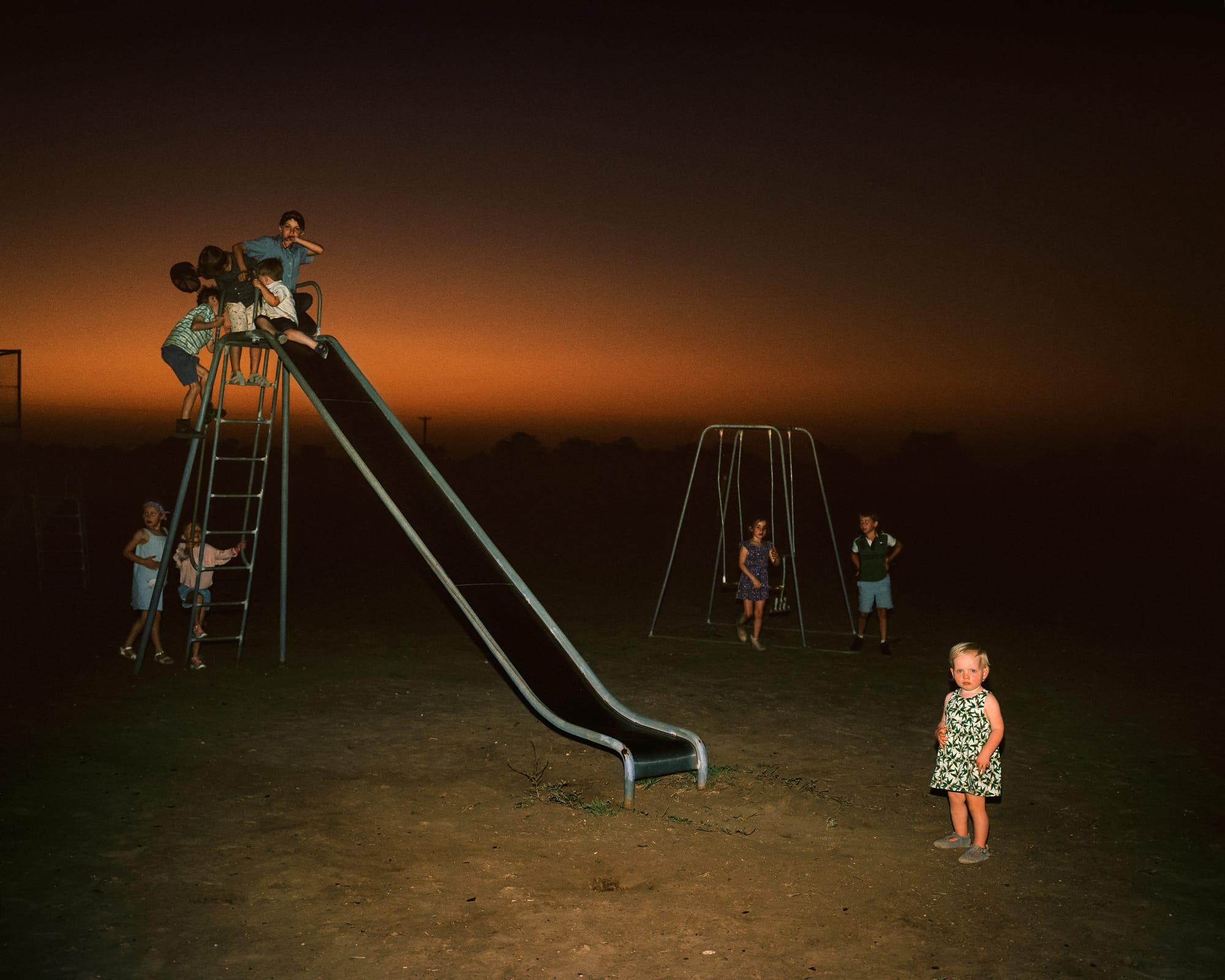
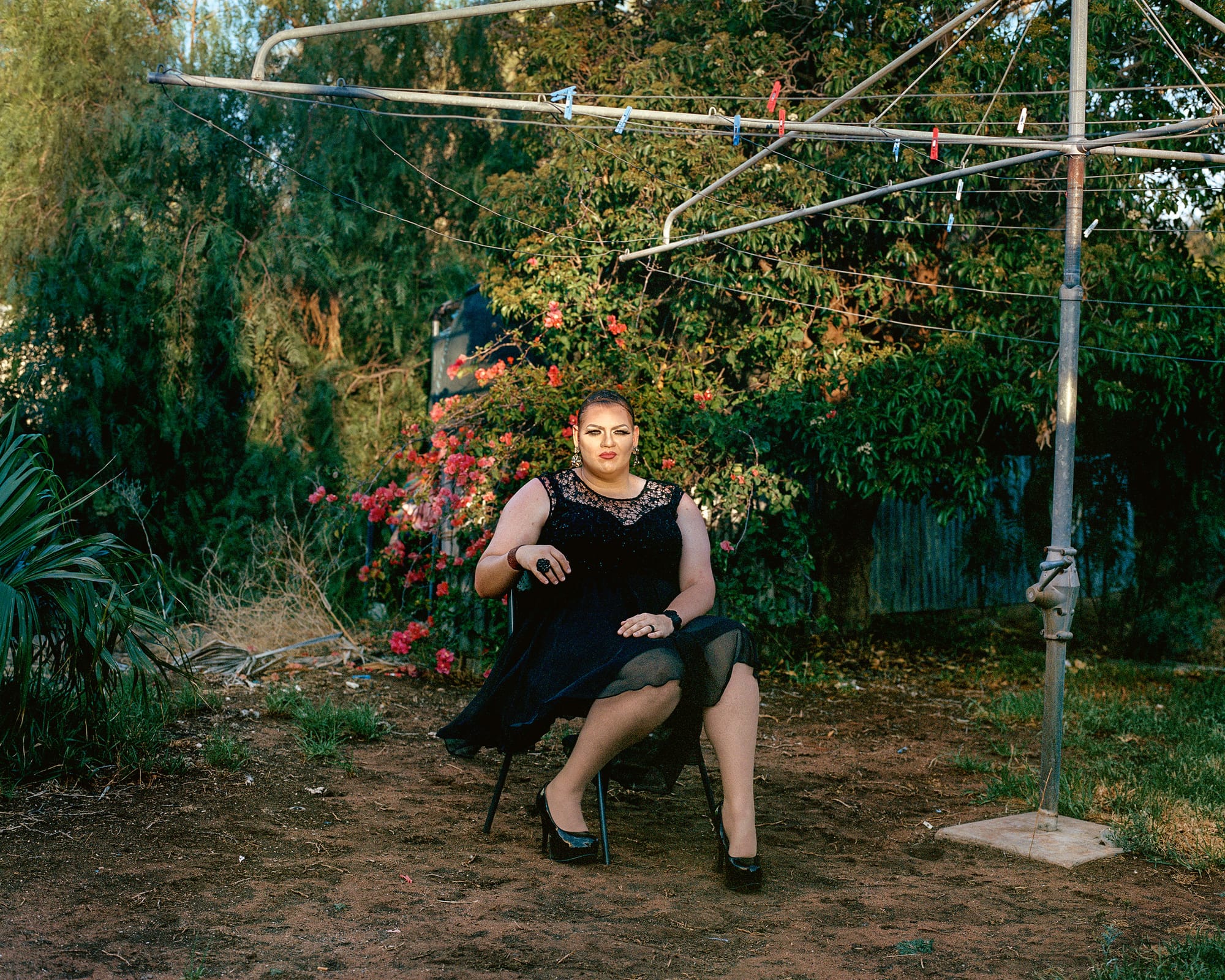
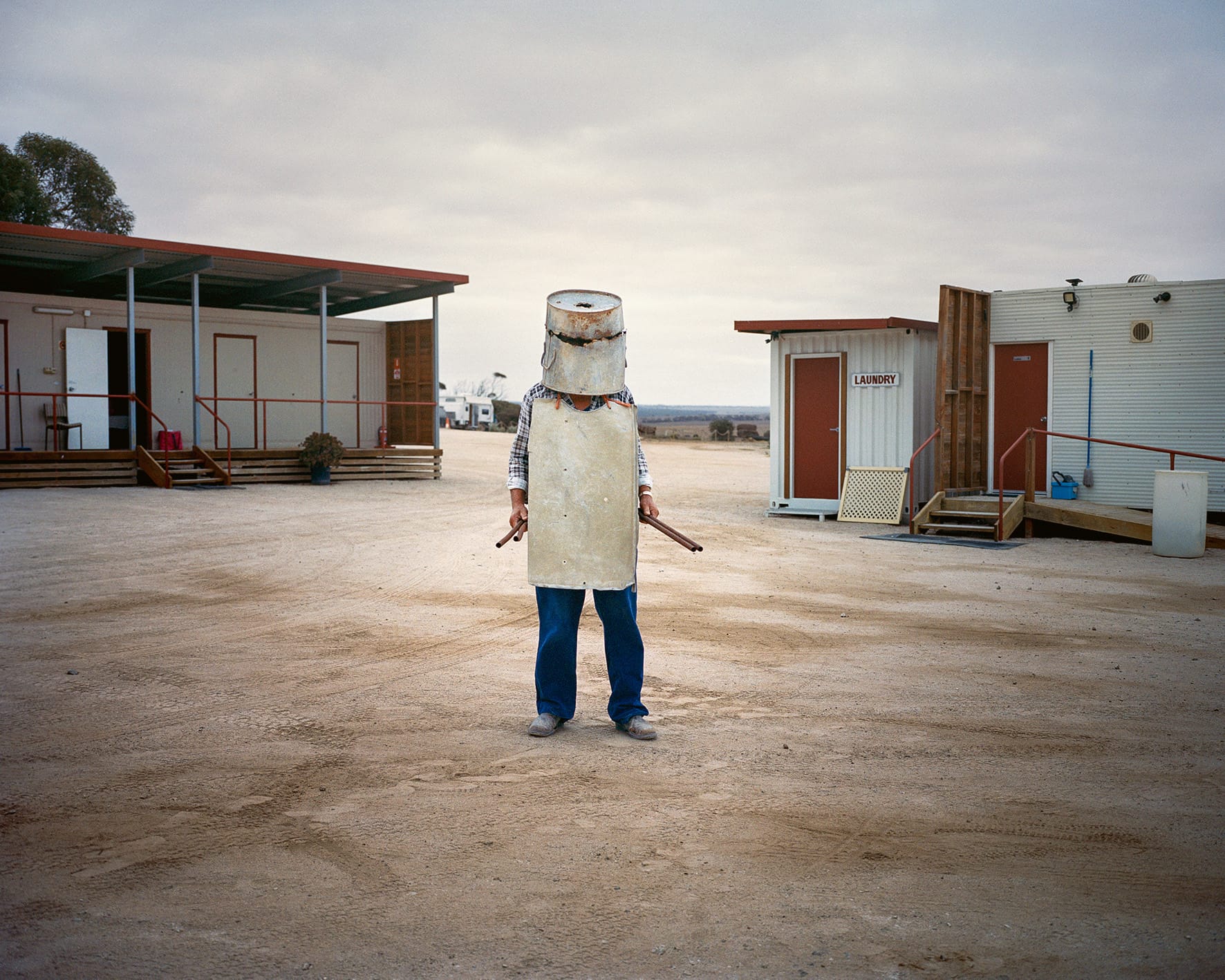
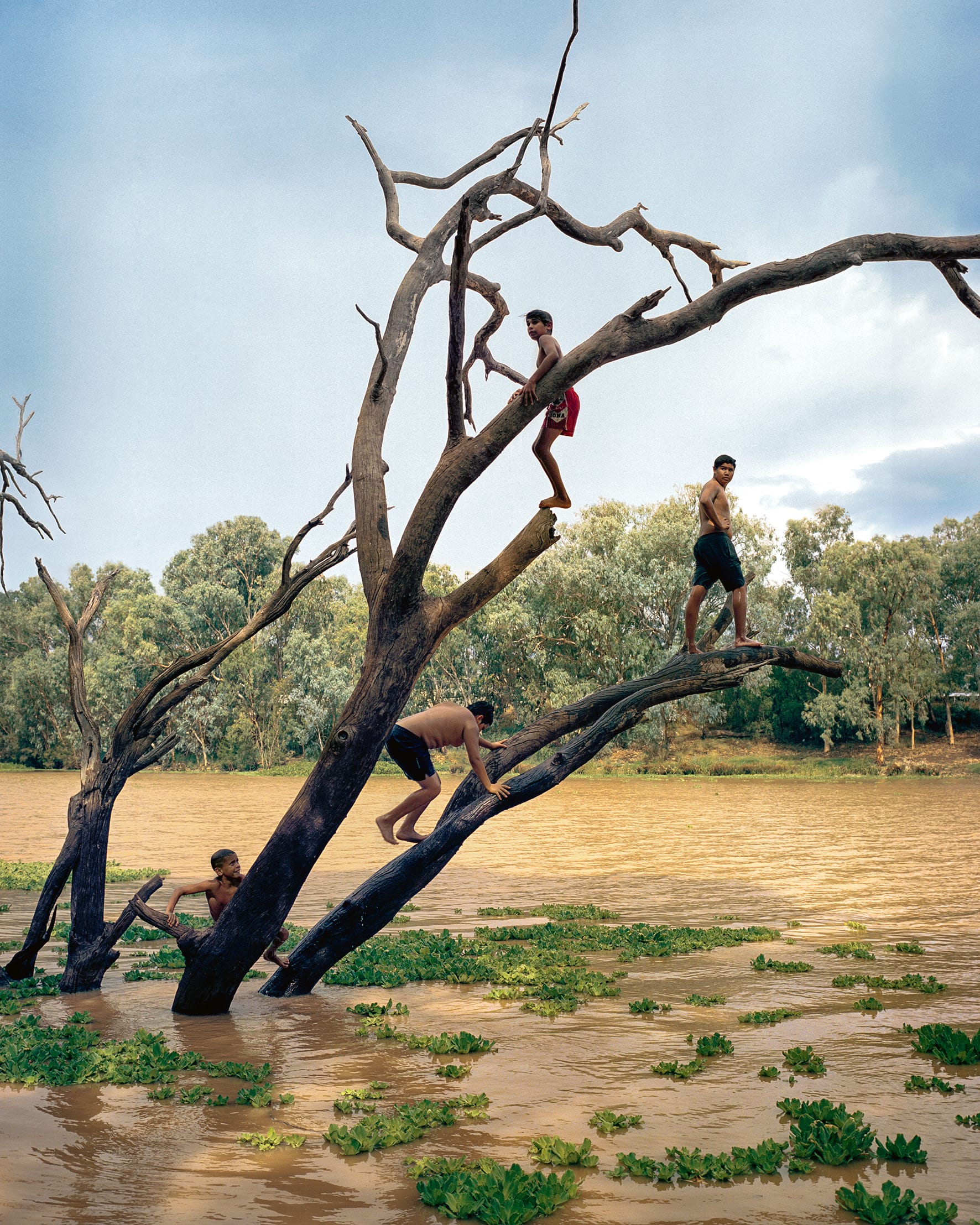
(From left) Brendan Barlow, aka Shelita Buffet, at home before performing in The Adventures of Priscilla, Queen of the Desert tribute show at the Palace Hotel, Broken Hill, NSW, 2017; Ned Kelly impersonator, South Australia, 2018; kids play in the swollen Warrego River, Cunnamulla, south-west Queensland, 2022. Photography Adam Ferguson.
Ferguson started in the coal-mining communities of central Queensland, spending time with workers and their families in the purpose-built mining town of Moranbah. He thought his work might be focused on mining as a key social and economic force in the outback. “But as I travelled I started to realise it was going to be a much broader project.”
Influenced by the work of Swiss-American documentary photographer Robert Frank, known for his distinctive street photography shot on road trips throughout the US in the 1950s, and the portraiture of Richard Avedon in his landmark 1985 book In the American West, Ferguson embarked on long trips into remote areas. Sometimes the itinerary was planned, often “I just followed my nose, to see who wanted to chat”.
He set out to make a series of environmental portraits of people. “Then at some point I realised those portraits needed more context, so I started making more landscapes and shooting more candid photography in between the portraits, building a world that explored the land as much as the people.”

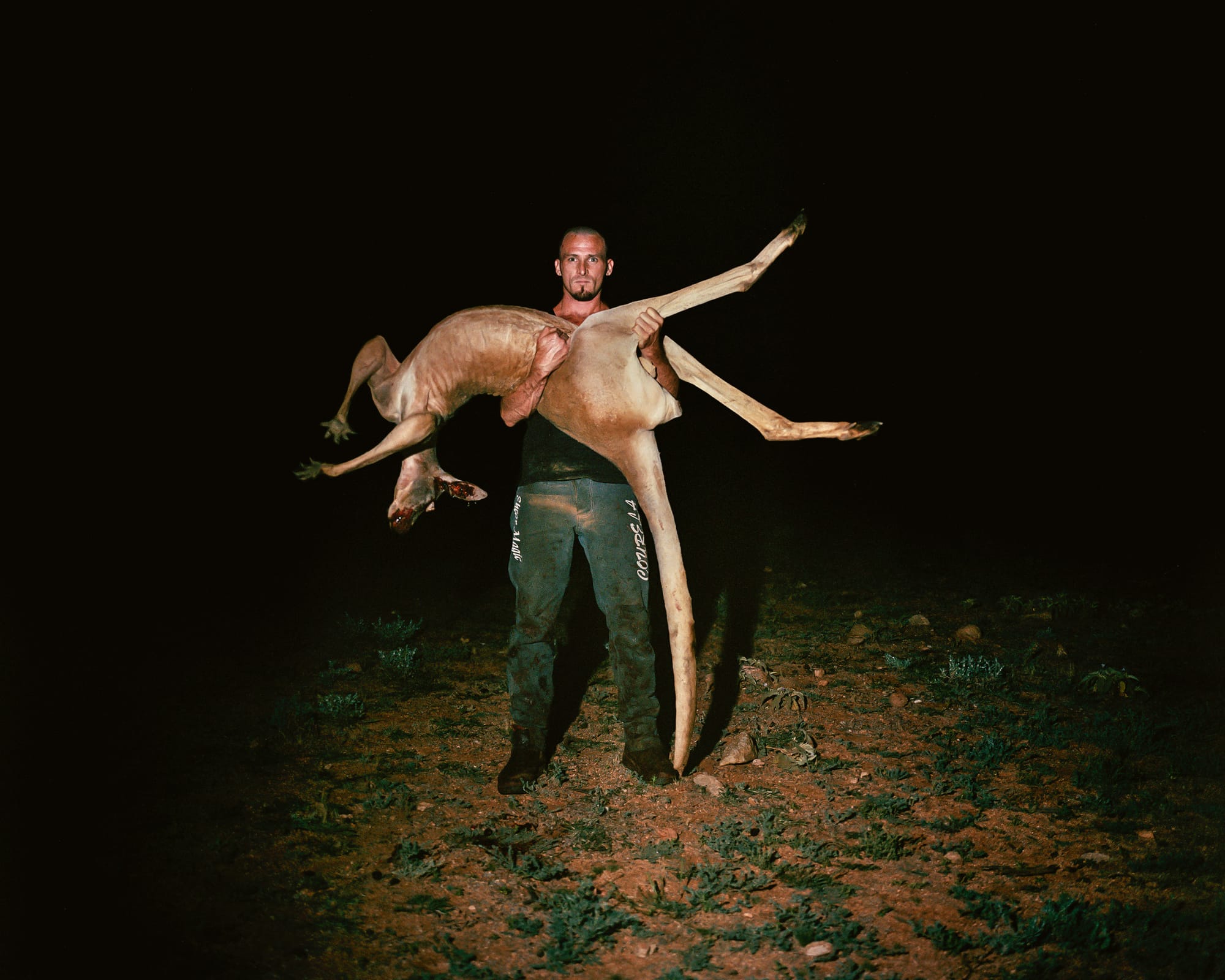
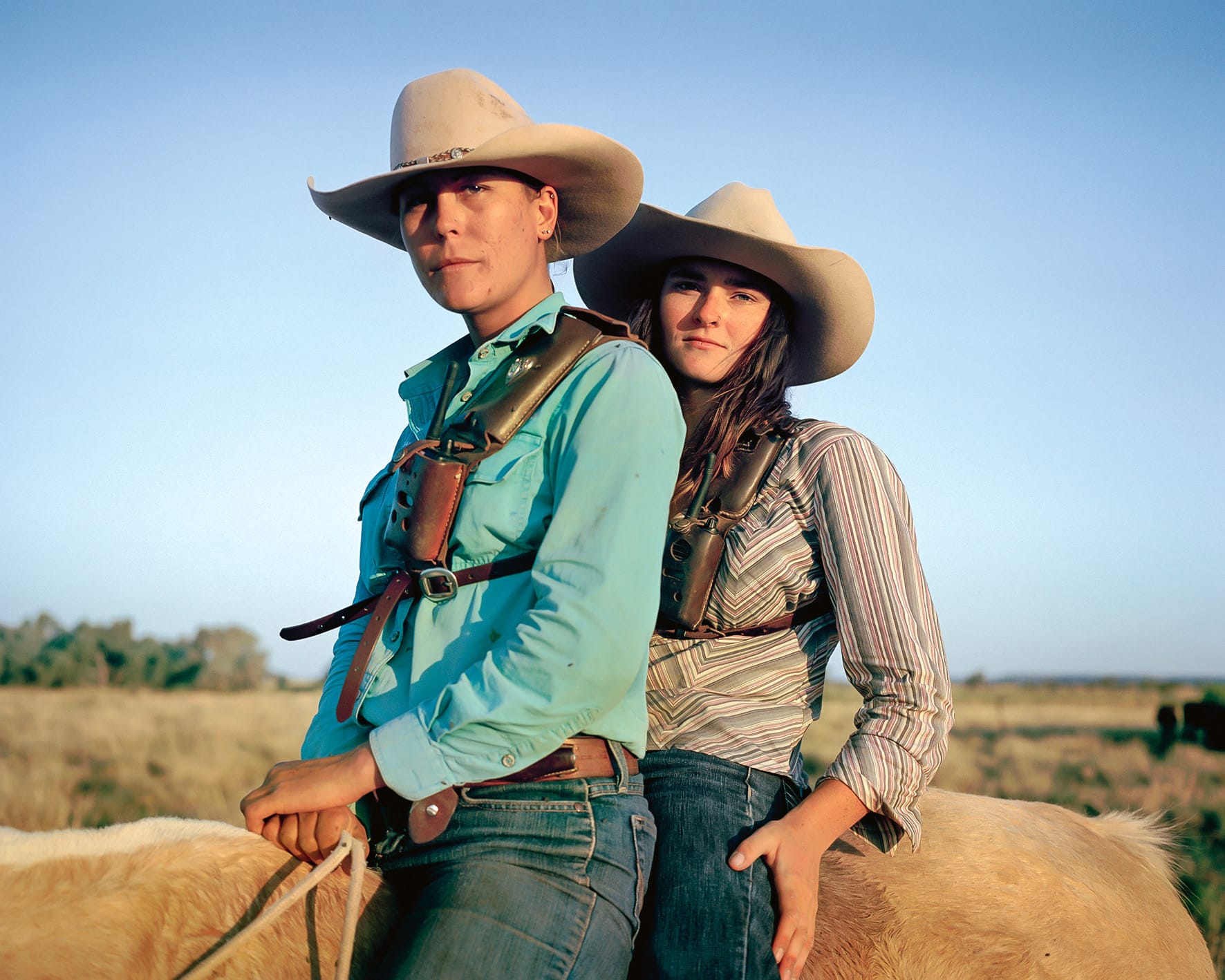

(From left) Dwayne John working as an offsider to a commercial kangaroo shooter at Plumbago Station, northern South Australia, 2017; ringers Faren Kate Flick and Violet Kayt Roker-Mitchell droving cattle near Winton, central-west Queensland, 2022; Pintupi-Luritja Lutheran pastor Simon Dixon at Ikuntji/Haasts Bluff, in the West MacDonnell Ranges, Northern Territory, 2023. Photography Adam Ferguson.
He sought out “archetypal” characters: shearers, publicans, multi-generational farming families in remote regions. “I wanted to photograph things that we’re losing or that are fragile, facets of the bush that won’t necessarily be here in a generation or two.”
Among the most profound moments were spent on country with Aboriginal communities, and in the deserts of Western Australia – “the expanse of it was very powerful and liberating, like being at the ocean in inverse”.
Slowly, as Ferguson criss-crossed the country, the project became about human relationships with the land, and how environments have changed under human influence. He clocked 150,000 kilometres photographing diverse people in remote places: commercial kangaroo shooters in South Australia, Indigenous elders in the Western Desert, farmers facing drought near Walgett in north-west New South Wales.
This focus on relationships with landscape guided the challenge of editing tens of thousands of images to just 44 for his forthcoming book, Big Sky. (“I shot analogue, which made it a little easier. If I’d shot digitally I would have had thousands more images to sort through.”)
The result is a “documentary of the anthropocene” in regional Australia, at once timeless and contemporary; a snapshot of human life in extraordinary landscapes in the second decade of the century.
Adam Ferguson won the 2023 Galah Regional Photography Prize. His new book, Big Sky, is published by GOST Books next month.